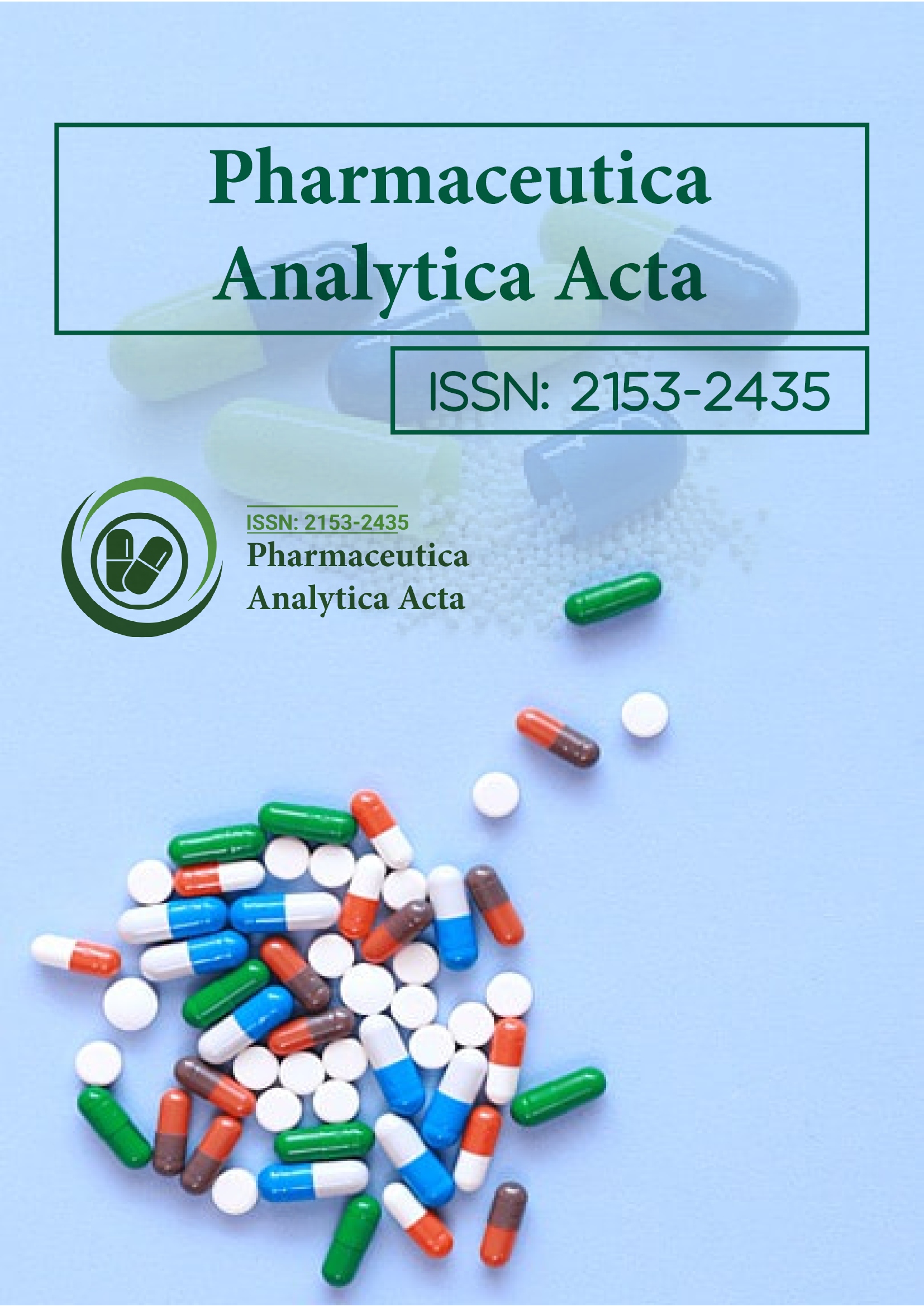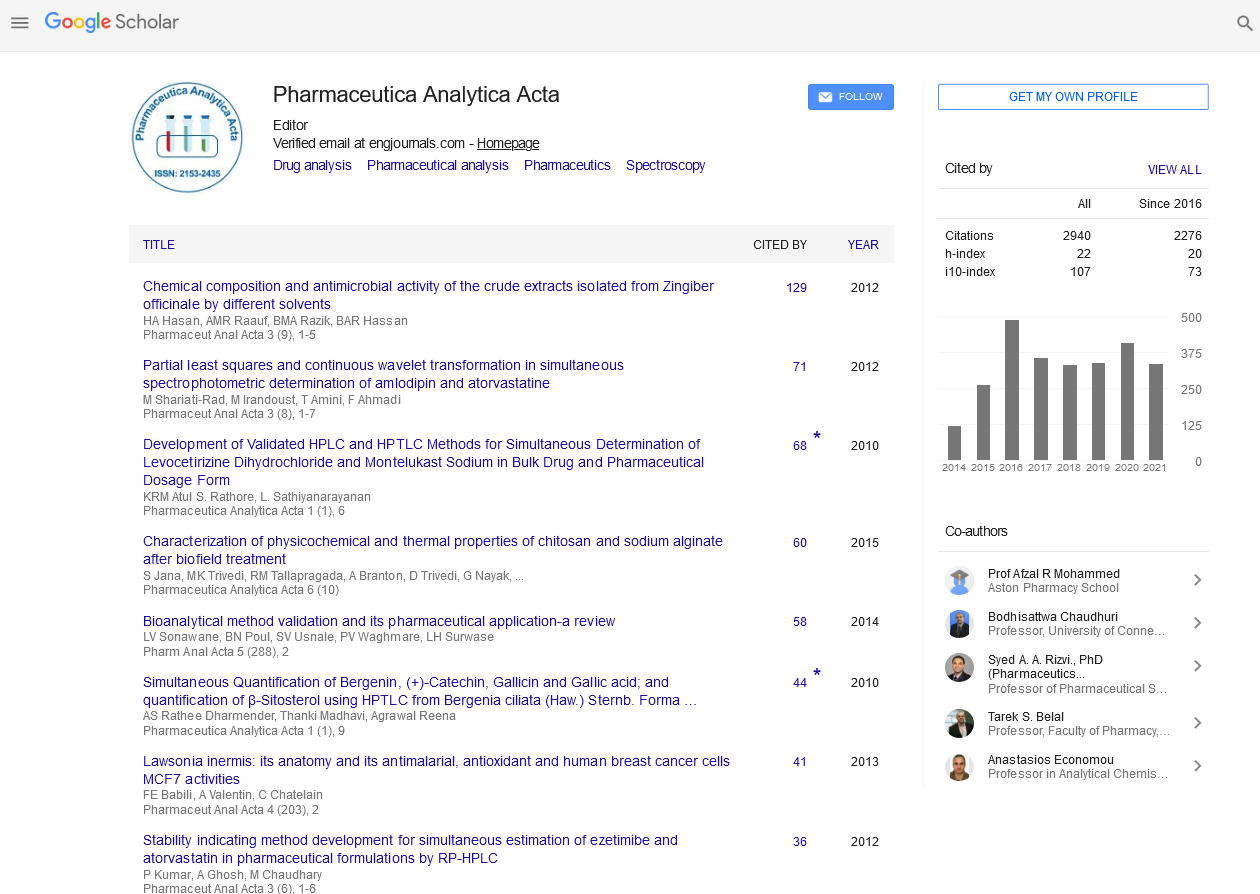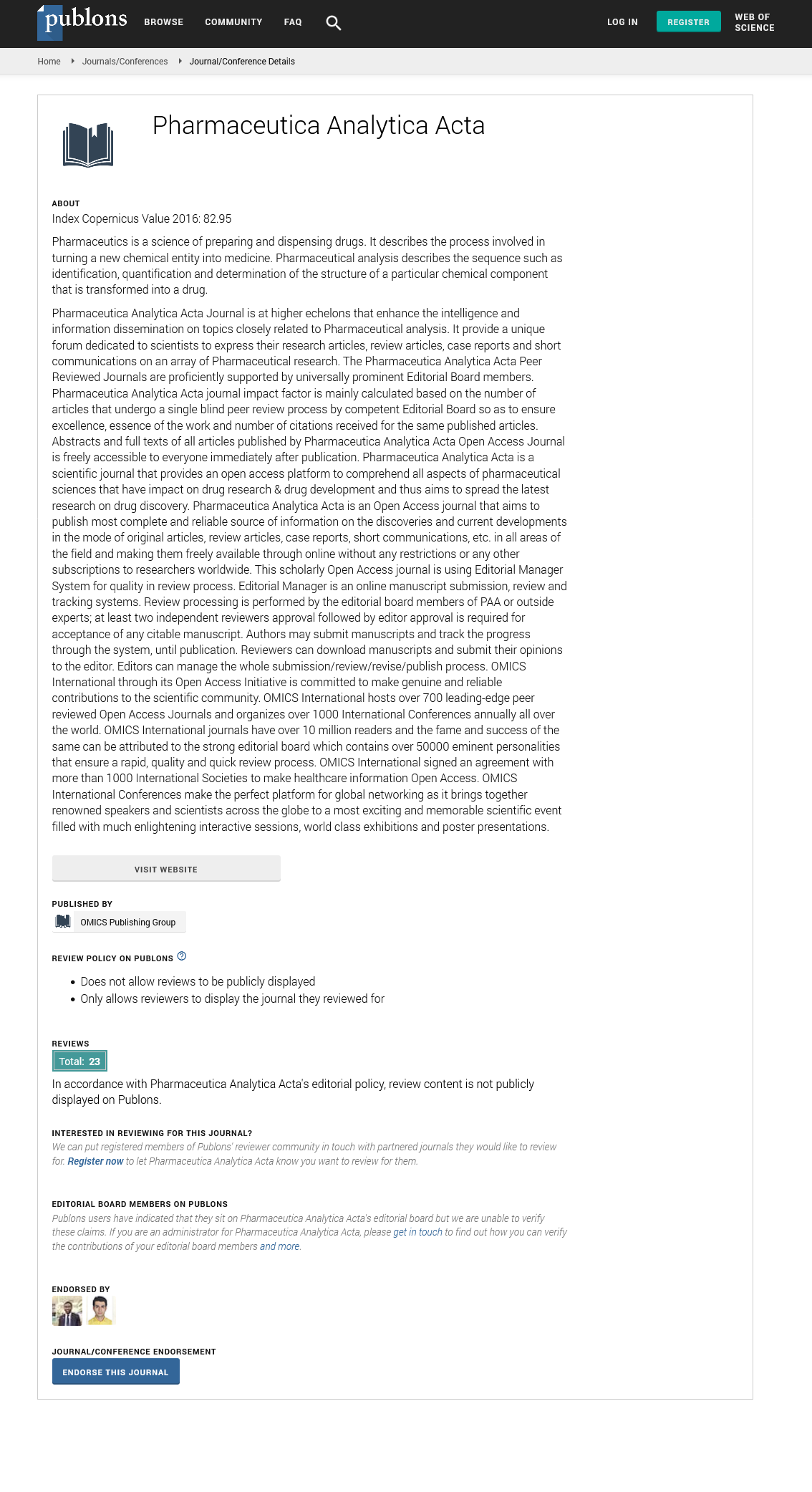Indexed In
- Open J Gate
- Genamics JournalSeek
- Academic Keys
- JournalTOCs
- The Global Impact Factor (GIF)
- China National Knowledge Infrastructure (CNKI)
- Ulrich's Periodicals Directory
- RefSeek
- Hamdard University
- EBSCO A-Z
- OCLC- WorldCat
- Publons
- Geneva Foundation for Medical Education and Research
- Euro Pub
- Google Scholar
Useful Links
Share This Page
Journal Flyer

Open Access Journals
- Agri and Aquaculture
- Biochemistry
- Bioinformatics & Systems Biology
- Business & Management
- Chemistry
- Clinical Sciences
- Engineering
- Food & Nutrition
- General Science
- Genetics & Molecular Biology
- Immunology & Microbiology
- Medical Sciences
- Neuroscience & Psychology
- Nursing & Health Care
- Pharmaceutical Sciences
Opinion Article - (2025) Volume 16, Issue 3
Chromatographic Approaches to Pharmaceutical Impurity Profiling
Claire Bernard*Received: 30-Aug-2025, Manuscript No. PAA-25-30230; Editor assigned: 01-Sep-2025, Pre QC No. PAA-25-30230; Reviewed: 16-Sep-2025, QC No. PAA-25-30230; Revised: 22-Sep-2025, Manuscript No. PAA-25-30230; Published: 30-Sep-2025, DOI: 10.35248/2153-2435.25.16.828
Description
Impurity profiling determines the chemical purity, quality and safety of drug products. It involves identifying and quantifying all components that coexist with the active ingredient, including residual solvents, degradation products and process-related contaminants. The presence of such impurities can affect a product’s effectiveness, stability and safety, making their detection and control a critical part of manufacturing.
Chemistry-based testing methods offer the necessary tools to identify and characterize these substances ensuring that every product meets strict quality standards. Among these methods, chromatographic techniques such as high-performance liquid chromatography, gas chromatography and capillary electrophoresis have become the most effective due to their superior separation efficiency and reliability. These approaches allow scientists to isolate and evaluate individual components within complex mixtures, producing a detailed overview of the chemical composition of a drug or formulation.
A significant part of impurity profiling focuses on the separation and identification of unwanted components from the active substance. Developing suitable methods requires careful selection of stationary phases optimization of gradient programs and precise calibration of detectors. Factors like solvent type, temperature and flow rate greatly influence the clarity and sensitivity of the results. Well-designed protocols not only describe the step-by-step procedure but also explain the reasoning behind each decision, allowing methods to be reproduced and adapted across laboratories.
The reliability of any testing method depends on its validation. Parameters such as accuracy, precision, linearity, detection limit and quantification limit must be thoroughly examined to confirm that the approach provides dependable results. Establishing these characteristics ensures that the outcomes accurately represent the true composition of the product being analyzed.
Both quantitative and qualitative assessments of impurities are essential elements of impurity profiling. Chromatographic peaks are interpreted based on retention times spectral patterns or fragmentation profiles obtained through mass spectrometry. Comparing these results with authentic reference standards allows precise identification and confirmation of impurity structures. The combination of identification and quantification enables specialists to detect trace levels of contaminants that might compromise product safety or performance. This information plays a vital role in refining synthetic processes, improving purification methods and ensuring compliance with regulatory limits for impurity levels.
Comprehensive impurity profiling not only protects patients but also helps manufacturers improve production efficiency and identify potential weaknesses in their processes. Monitoring impurity formation under conditions that simulate long-term storage is another critical aspect of impurity assessment. Stability testing subject’s compounds to factors such as heat, moisture and light to accelerate degradation. Tracking changes in impurity levels over time allows scientists to predict potential stability problems and design formulations that retain their chemical integrity.
Observing how impurities evolve under controlled conditions offers valuable insight into a product’s shelf life and expected behavior during storage and distribution. Such findings guide improvements in formulation design, packaging selection and preservation methods to ensure that products remain safe and effective throughout their lifecycle. Documenting and sharing these results within the scientific community also helps establish better manufacturing practices and promotes consistency in product quality across the industry.
In addition to traditional chromatographic techniques modern impurity profiling increasingly employs combined or approaches that integrate multiple analytical tools for deeper characterization. Pairing chromatography with mass spectrometry for example, enables simultaneous identification and quantification of numerous impurities, including those present in trace amounts. This approach provides structural information that cannot be derived from retention times alone, offering a more complete understanding of chemical behavior during synthesis, formulation and storage.
The adoption of such advanced methods has greatly enhanced the ability to uncover complex impurity patterns and determine their origins. Ensuring method robustness is equally important. Small variations in laboratory conditions, such as temperature fluctuations or solvent composition should not significantly affect the outcome of impurity detection. Validating this robustness ensures that the method remains dependable and consistent across different environments.
Reliable impurity profiling supports manufacturers in optimizing production processes, selecting compatible excipients and implementing safe handling procedures. It also provides the foundation for meeting international safety and quality standards. Regulatory authorities require detailed documentation of impurity levels including their possible toxicological effects as part of product approval and quality assurance. Accurate impurity data, therefore, play a key role in meeting compliance requirements and building confidence among regulators and healthcare providers.
Citation: Bernard C (2025). Chromatographic Approaches to Pharmaceutical Impurity Profiling. Pharm Anal Acta. 16:828
Copyright: © 2025 Bernard C. This is an open-access article distributed under the terms of the Creative Commons Attribution License, which permits unrestricted use, distribution and reproduction in any medium, provided the original author and source are credited


